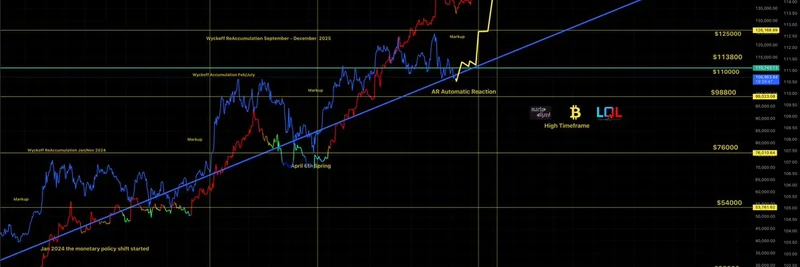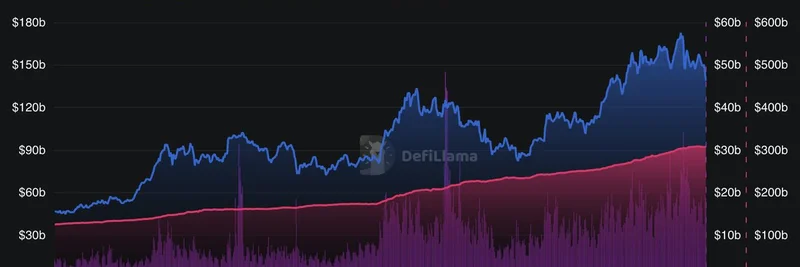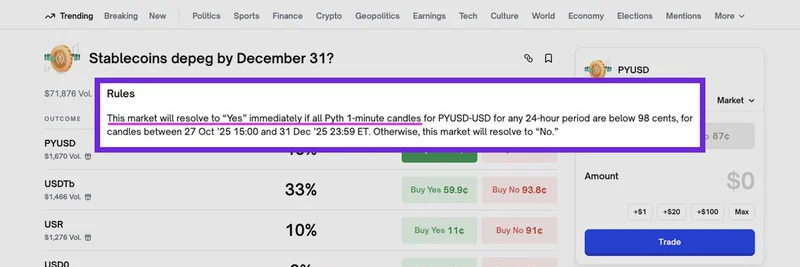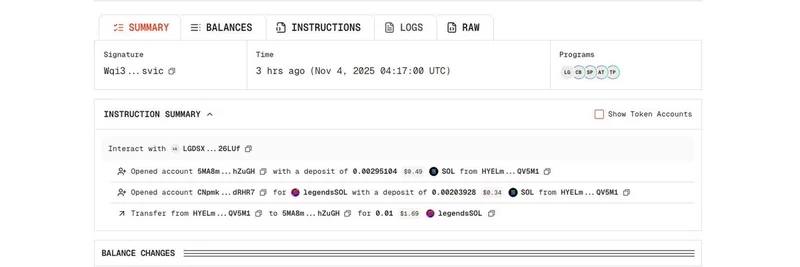If you're knee-deep in the crypto world, you know that Bitcoin isn't just a digital asset—it's often a bellwether for the entire market, including those wild meme tokens that can moon or crater overnight. Recently, crypto commentator MartyParty dropped a thought-provoking tweet that's got folks buzzing about the bigger picture. Let's break it down in simple terms and see how it ties into the meme token scene.
MartyParty, a macro analyst and music producer who's no stranger to dissecting market trends, shared a high-timeframe chart of Bitcoin on November 3, 2025. High timeframe just means looking at the long-term view, like monthly or yearly charts, to spot overarching patterns instead of day-to-day noise.
In the chart, you see Bitcoin's price (in red) overlaid with global liquidity measures (in blue), highlighting what MartyParty calls "controlled expansion" by the US Treasury. He points out a flow: Treasury Bills (T-Bills, short-term government debt) to stablecoins (like USDT or USDC, which are pegged to the dollar) and then into Bitcoin. Since January 2024, we've seen three cycles of this expansion followed by consolidation—basically, money floods in, prices pump, then long-term holders take profits, leading to a pullback.
This isn't just random speculation. MartyParty references the "Stephen Miran playbook." For those unfamiliar, Stephen Miran is a crypto-friendly economist who served as Chair of the Council of Economic Advisers under Trump and now sits on the Federal Reserve Board of Governors. He's known for advocating financial deregulation and seeing crypto as a key player in economic innovation. Miran has publicly endorsed Bitcoin, tweeting phrases like "Bitcoin fixes this" and pushing for streamlined regs in the space. His time at the Treasury during the COVID era and his critiques of past monetary policies suggest a strategy where increased liquidity—through tools like T-Bill issuance—boosts risk assets like crypto.
Why does this matter for meme tokens? Meme coins thrive on liquidity and hype. When global money supply expands (think more dollars floating around due to Treasury actions), it often trickles into high-risk, high-reward plays. Stablecoins act as a bridge: investors park funds in them for stability, then deploy into Bitcoin or altcoins, including memes. If MartyParty's right and these cycles continue, we could see another wave where tokens like Dogecoin or newer Solana-based memes get a boost. But remember, consolidation phases mean corrections—perfect times to accumulate if you're playing the long game.
The tweet sparked a few replies, like one asking for a timeline (MartyParty didn't specify, but based on the chart, cycles seem to span months) and another hyping a specific token. It also highlighted curiosity about Miran, with one user misspelling his name but calling the take interesting.
In the broader blockchain ecosystem, this underscores how traditional finance and crypto are intertwining. For meme token enthusiasts, keeping an eye on macro indicators like global M2 money supply (that's the broad measure of money including cash, checking deposits, and near-money) could be a game-changer. As liquidity ramps up, so does the potential for viral pumps—but always DYOR and manage risk, folks.
If you're building your knowledge base on meme tokens, check out our other articles on Solana meme trends or how macro events impact crypto. What's your take on these cycles? Drop a comment below!




